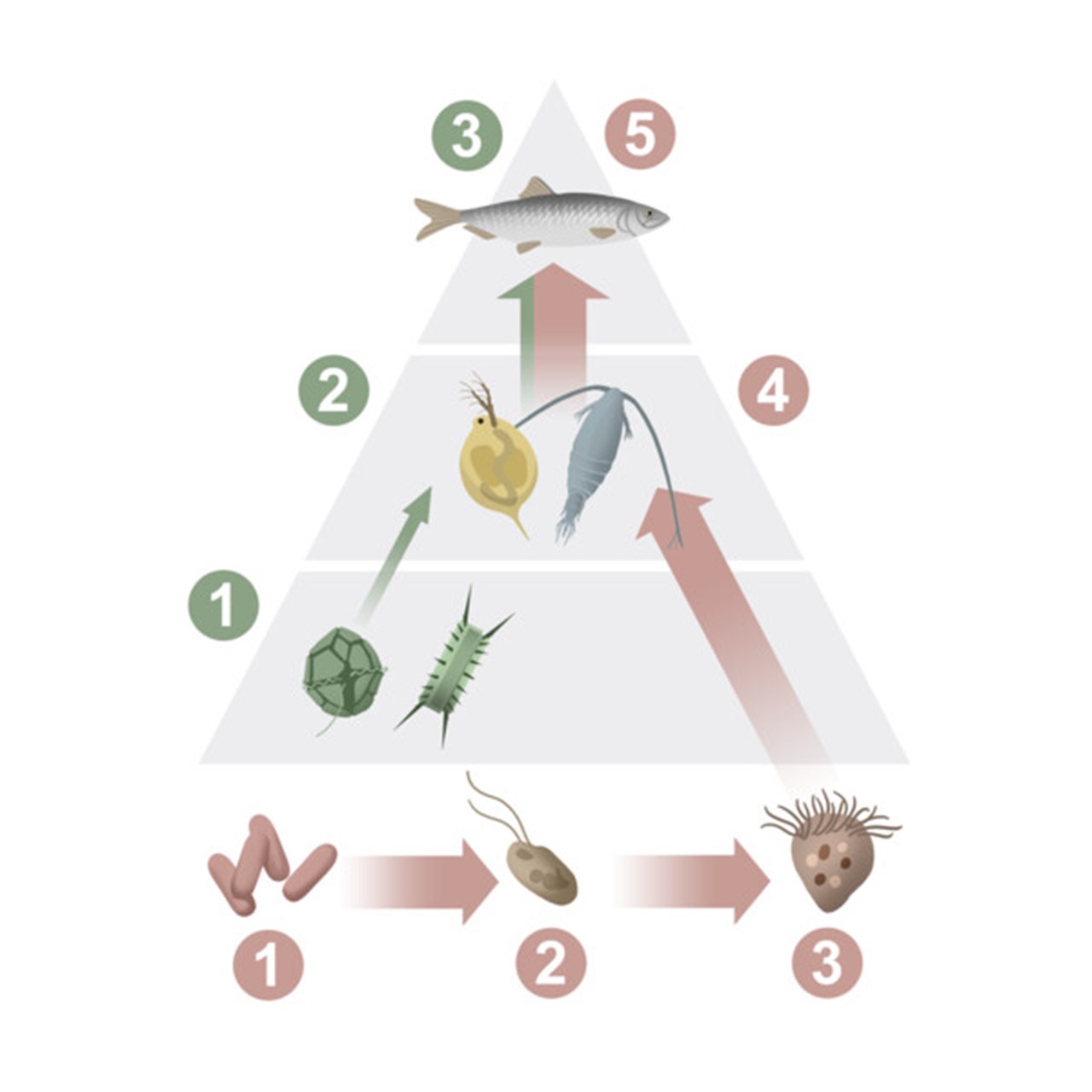FEATURE It is now clear that more dissolved organic carbon in the seawater leads to a less efficient food web. But what controls this, and what roles do each part of the food web play?
At the bottom of the food web we find phytoplankton and bacteria, basal producers. The balance between these two actors can be decisive for how efficient the food web will be, i.e. how much energy from the basal production reaches top consumers. Zooplankton feeds on phytoplankton, while bacteria are too small to be directly consumed by zooplankton. Instead, they are eaten by protozoa, which are then consumed by zooplankton. Thus, another step has been added to the food web, and it grows more complicated.

Terrestrial carbon is transported with river water to the coastal zone. Bacteria are able to consume this carbon, and thereby become less dependent on phytoplankton.
ImageIve Van KrunkelsvenBacteria are to some extent dependent on phytoplankton production to gain access to organic nutrients, while phytoplankton can use inorganic nutrients. In aquatic systems that are affected by terrestrial carbon, bacteria can be decoupled from their dependence on phytoplankton by using dissolved organic carbon originated on land. When the bacteria account for a larger part of the basal production, the food web becomes less efficient, since the energy is channeled through several steps. Additionally, bacteria are of poorer quality than phytoplankton for many consumers.
The marine food web is a highly complex system, and the balance between plankton and bacteria at the base can be controlled both from below, for example by nutrient supply, and from the top by top consumers. There are very few studies that include all levels from bacteria and phytoplankton to fish.
A group of EcoChanges researchers have conducted experiments to investigate what actually controls food web efficiency. By using mesocosms, they were able to study both basal production and top consumer production in different combinations of added DOC, and with and without fish as top consumers.

When bacteria account for a larger part of the basal production the marine food web becomes less efficient.
ImageIn general, the addition of DOC resulted in lower food efficiency, as expected. What was more surprising were the differences in response to the different levels of the food web. For example, phytoplankton was favoured by added DOC when the topmost level in the food web was zooplankton, while they were disadvantaged when the same addition was made with fish as the topmost level.
It could also be stated that food web efficiency was controlled both from the top and the bottom. When fish were included in the experiments, it could have an effect on production throughout the food web, all the way down to plant plankton and bacteria. However, the decrease in food web efficiency was not primarily the result of changes in the top consumers' production, but rather a result of changes at the bottom of the food web.
The marine food web with all its steps and parts is complicated, and it can therefore be difficult to know how changes will affect its many different parts. This study contributes to the understanding of complexity, and shows clearly that even in relatively simple experiments, the path of energy through the food web is complex and difficult to predict.
The article has earlier been published in the EcoChange annual report. The text is based on:
This website uses cookies which are stored in your browser. Some cookies are necessary for the page to work properly and others are selectable. You choose which ones you want to allow.